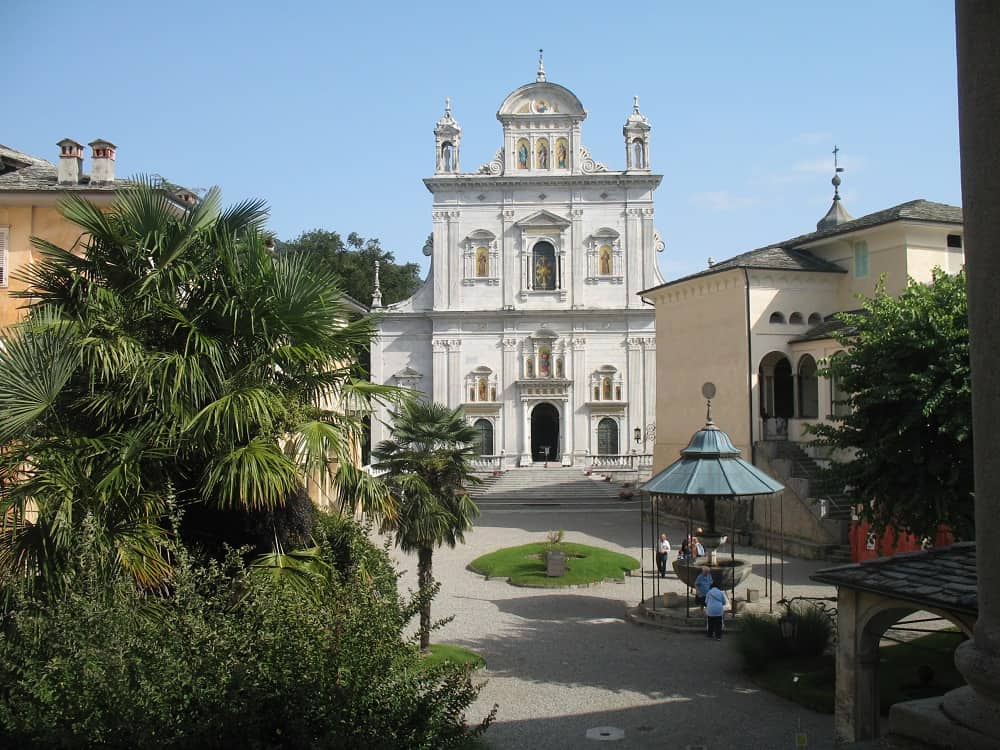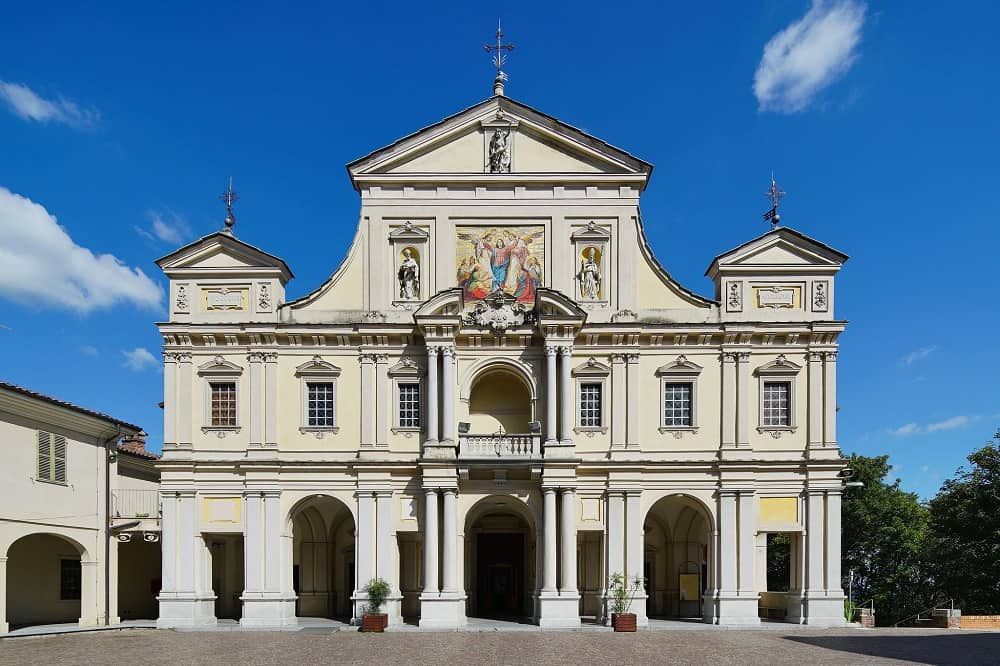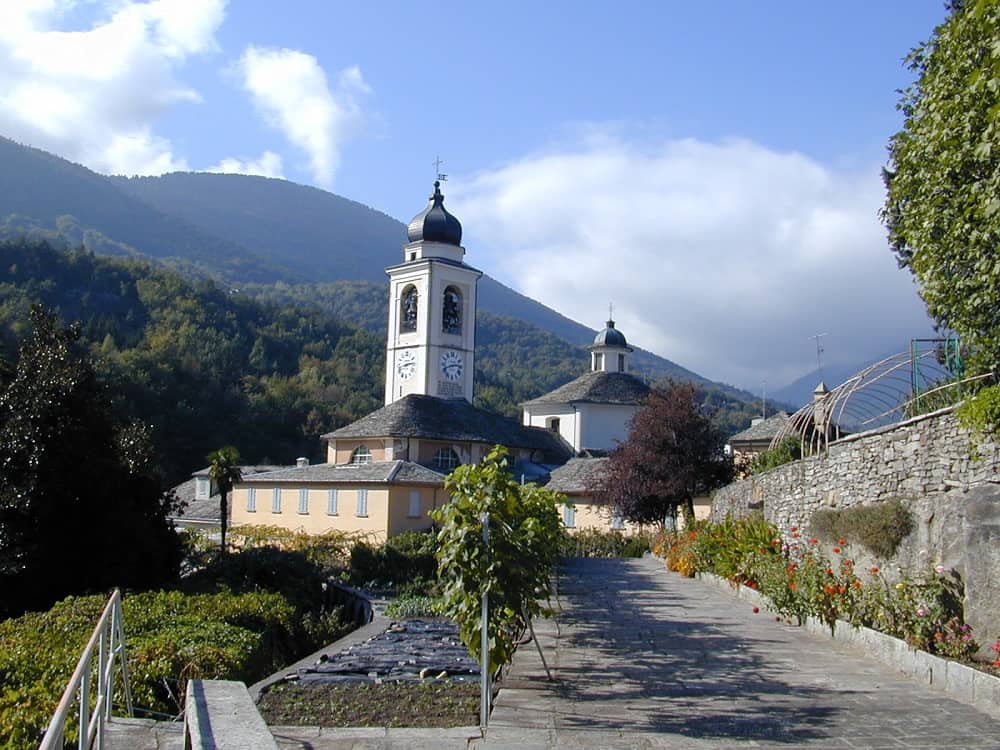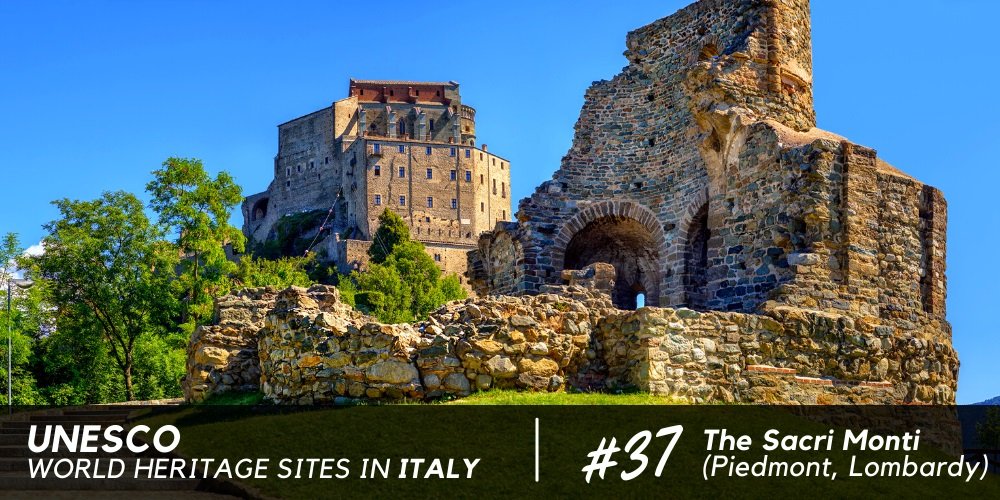The UNESCO heritage of Sacri Monti (holy mountains)is a particular example of "widespread" heritage in different areas of Northern Italy. They are groups of architectural structures dating back to the XVI-XVII century and symbolizing the Christian belief. In their interior they host mural paintings and statues of great value. The beauty of these places is also in their ability to adapt and fit into the natural environment that surrounds them: hills, forests and lakes are the setting for these temples of the Christian religion.
The series of nine complexes is located in the mountains of northern Italy (Varallo, Crea, Orta, Varese, Oropa, Ossuccio, Ghiffa, Domodossola, and Valperga) and is still a priceless heritage of religious tourism and beyond.

The history of Sacri Monti

The different Sacri Monti were built almost all in the same period. The purpose was to create places of prayer in Europe as an alternative to the Holy Land (Jerusalem and Palestine) in order to allow the faithful to honor their faith in pilgrimage without having to sustain long journeys. At that time, in fact, access to Catholic places in the East was becoming increasingly dangerous for pilgrims because of the rapid expansion of Muslim culture.
After the Council of Trent (important meeting to establish the dogmas of the Christian church) were proposed three different places to build the "New Jerusalem": Varallo in Valsesia, Montaione in Tuscany and Braga in northern Portugal. The places were chosen on the basis of their topographical similarity to the Holy Land.
In Italy, the first example of a Sacro Monte was that of fu di Varallo, erected in 1480. It was dedicated not only to Christ but also to cults dedicated to the Virgin Mary, the saints, the Trinity and the Mysteries of the Rosary. Soon it became a model for other Sacred Mounts which followed. Each "Sacri Monti" was built following some common standard rules for typology and architectural style, but it evolved with its own art and architecture assuming uniqueness and distinguishing itself from the others.
Each one has a distinct theme or role. At Orta, for example, the complex is dedicated to St. Francis of Assisi with 21 chapels and a garden dating back to the 16th century. Sacro Monte della Beata Vergine del Soccorso in Ossuccio contains 14 Baroque-style chapels positioned on the slope of a mountain that leads to a shrine at the summit. In the early 18th century, Michelangelo da Montiglio, a monk, developed Sacro Monte di Belmonte, Valperga Canavese to recreate the biblical sites of the Holy Land with a circuit of 13 chapels symbolizing the main incidents of the Passion.
The Sacri Monti were decorated and embellished by the great artists of the time with paintings and sculptures representing the most edifying episodes in the life of Jesus, Mary or the Saints.
Some of the Sacri Monti have been protagonists of important restorations started in 1980. Even today, the properties are protected by laws operating at different levels: national, regional and local.
Sacri Monti of Piedmont and Lombardy

An essential characteristic of Sacri Monti is to preserve a strong link not only with the natural landscape but also with the inhabitants of the surrounding places.
The original dispositions of chapels and environments, perfectly inserted within the natural landscape, have remained unchanged, preserving their authenticity. Even the traditions and use of the sites have not changed: all nine complexes are preserved as places of Christian pilgrimage, prayer and reflection, respecting the purpose for which they were originally built.
Each of the complexes preserves a uniqueness and precise characteristics.
In Piedmont, the Sacro Monte of Varallo has been made famous by the marvelous works of Gaudenzio Ferrari: wall paintings and figurative representations in wood and terracotta of sacred scenes; a true itinerary among life-size statues which tell the most important moments of Christianity. Still in Piedmont, the Sacro Monte of Serralunga di Crea in the province of Alessandria, were built on one of the highest hills of the Monferrato region. The Sacro Monte of Belmonte in Valperga, which rises on a hill of red granite, is a definitely suggestive and unique landscape.
The Sacro Monte Calvario of Domodossola presents a route which allows you to relive the episodes of the Via Crucis and the Passion of Christ on Calvary, while the Sacro Monte of Oropa is composed of twelve chapels dedicated to the life of the Virgin, arranged in two parallel rows and aligned along a zigzag path.
The Sacro Monte of Orta is dedicated to Saint Francis of Assisi and each of the twenty chapels, which follow one another in a spiral itinerary, retraces episodes of the saint's life. That of the Holy Trinity of Ghiffa includes three main chapels dedicated to biblical subjects and two other minor chapels built on the remains of an ancient medieval oratory.
In Lombardy, the Sacro Monte della Beata Vergine del Soccorso was built on the coast of Lake Como, the Sacro Monte del Rosario has been famous since the Middle Ages as an important pilgrimage destination.
UNESCO World Heritage

These heritages are the perfect combination of architecture, art and landscape. In 2003, the UNESCO commission decided to award them for " The implementation of architecture and sacred art in a natural landscape for educational and spiritual purposes".
It is a sacred heritage that combines beauty and spirituality. Visiting these places means facing a deep journey of faith contemplating, at the same time, structures and works of art of great value. A heritage that combines art, history and mysticism that is worth continuing to celebrate for a long time to come.
About the author
Written on 11/11/2021



Maria Luisa Ancona
The UNESCO heritage of the Sacri Monti of Piedmont and Lombardy are an important example of architecture and sacred art. Their importance lies in representing a perfect combination of natural, artistic and historical beauty. Born as places of pilgrimage in Italy for religious who could not go to the Holy Land, they have become wonderful temples of art and history to visit even in our days.